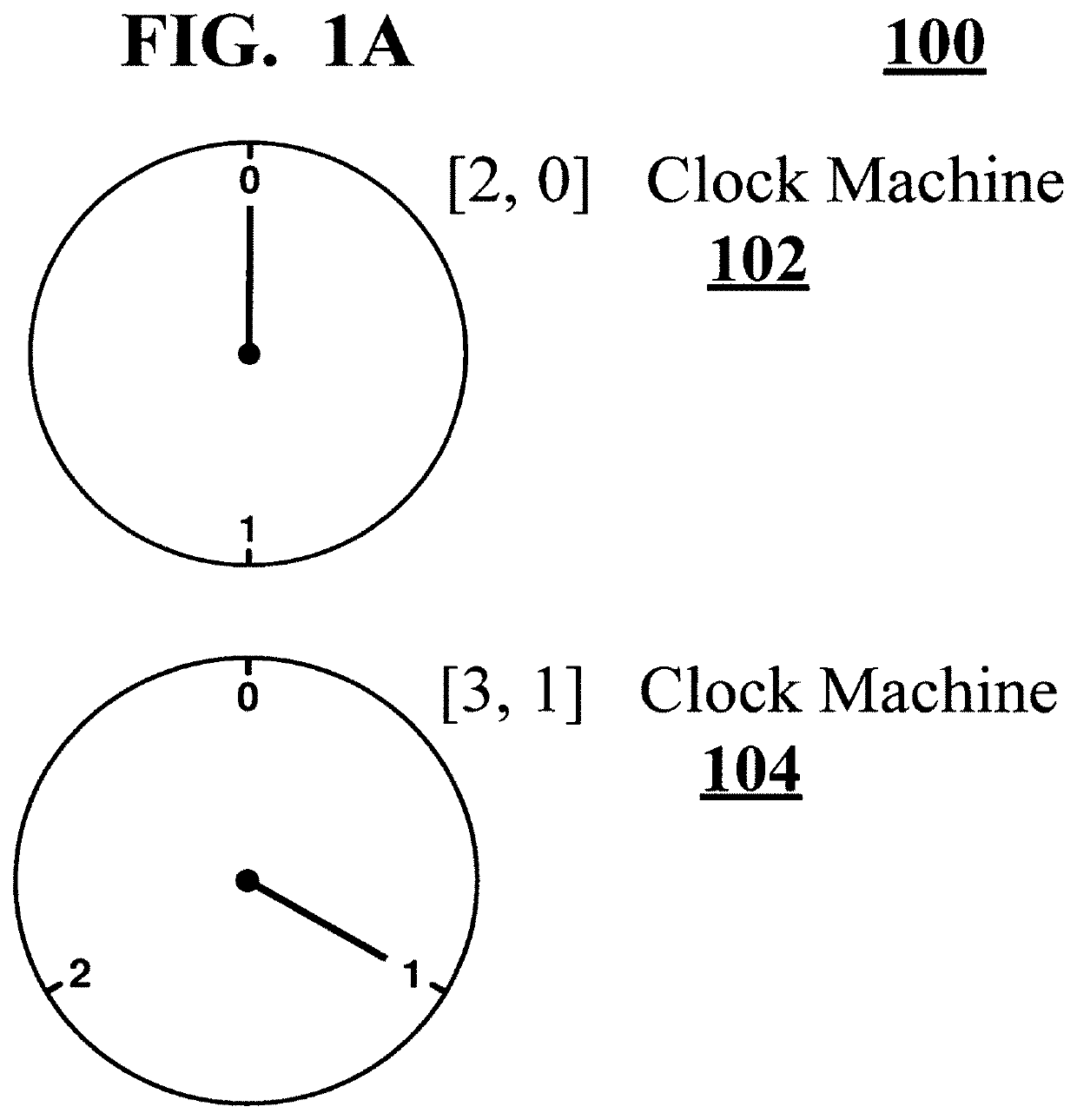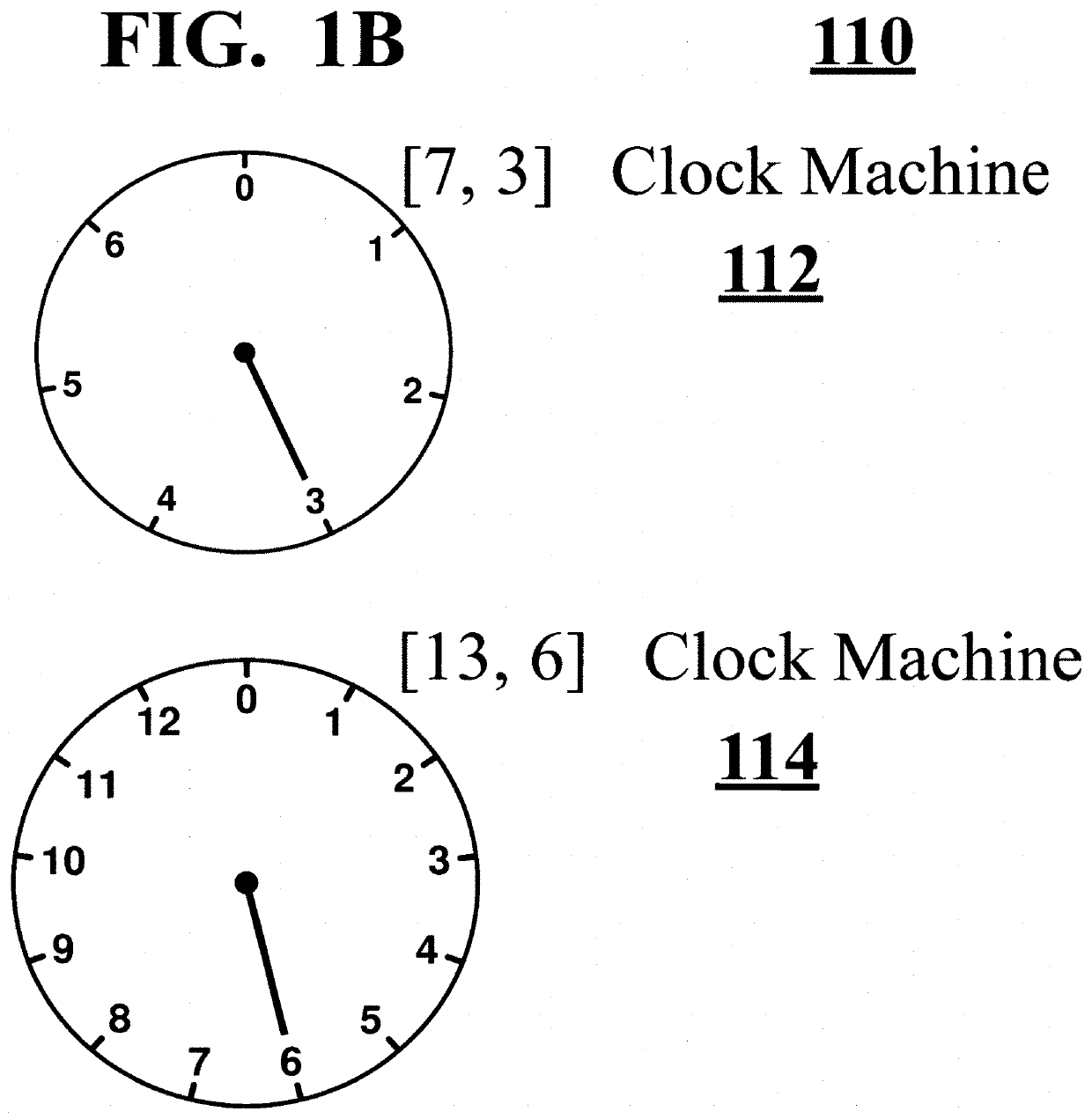Clock computing Machines
a computing machine and clock technology, applied in the field of clock computing machines, can solve the problems of huge vulnerabilities in our internet infrastructure, difficult for scientists to construct a comprehensive vaccine for the aids virus, and a large number of people that exhibit diversity
- Summary
- Abstract
- Description
- Claims
- Application Information
AI Technical Summary
Benefits of technology
Problems solved by technology
Method used
Image
Examples
example
[0136]This example demonstrates 2-bit multiplication with prime clock sums, computed with machine procedure 2. In table 6, for each u∈{0, 1}2 and each l∈{0, 1}2, the product u*l is shown in each row, whose 4 columns are labelled by 3, 2, 1 and 0. With input i of 4 bits (i.e., u concatenated with l), the output of the 2-bit multiplication is a 4-bit string 3(i) 2(i) 1(i) 0(i), shown in each row of table 6.
[0137]One can verify that the function 0:{0, 1}2×{0, 1}2→{0, 1} can be computed with the prime clock sum [2, 0]⊕[7, 3]⊕[7, 4]⊕[7, 5]⊕[11, 10], according to machine procedure 2. Similarly, the Boolean function 1 can be computed with the prime clock sum [2, 0]⊕[2, 1]⊕[3, 0]⊕[5, 2]⊕[11, 0]⊕[11, 1], according to machine procedure 2. The Boolean function 2 can be computed with the prime clock sum [5, 0]⊕[7, 0]⊕[7, 2]⊕[11, 4]. Lastly, the function 3 can be computed with the prime clock sum [2, 1]⊕[5, 0]⊕[11,1]⊕[11,6].
[0138]As described in machine specifications 1, 2, 3 and 5 and as shown ...
PUM
 Login to View More
Login to View More Abstract
Description
Claims
Application Information
 Login to View More
Login to View More - R&D
- Intellectual Property
- Life Sciences
- Materials
- Tech Scout
- Unparalleled Data Quality
- Higher Quality Content
- 60% Fewer Hallucinations
Browse by: Latest US Patents, China's latest patents, Technical Efficacy Thesaurus, Application Domain, Technology Topic, Popular Technical Reports.
© 2025 PatSnap. All rights reserved.Legal|Privacy policy|Modern Slavery Act Transparency Statement|Sitemap|About US| Contact US: help@patsnap.com



